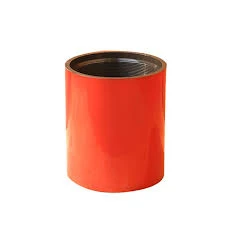- Afrikaans
- Albanian
- Amharic
- Arabic
- Armenian
- Azerbaijani
- Basque
- Belarusian
- Bengali
- Bosnian
- Bulgarian
- Catalan
- Cebuano
- Corsican
- Croatian
- Czech
- Danish
- Dutch
- English
- Esperanto
- Estonian
- Finnish
- French
- Frisian
- Galician
- Georgian
- German
- Greek
- Gujarati
- Haitian Creole
- hausa
- hawaiian
- Hebrew
- Hindi
- Miao
- Hungarian
- Icelandic
- igbo
- Indonesian
- irish
- Italian
- Japanese
- Javanese
- Kannada
- kazakh
- Khmer
- Rwandese
- Korean
- Kurdish
- Kyrgyz
- Lao
- Latin
- Latvian
- Lithuanian
- Luxembourgish
- Macedonian
- Malgashi
- Malay
- Malayalam
- Maltese
- Maori
- Marathi
- Mongolian
- Myanmar
- Nepali
- Norwegian
- Norwegian
- Occitan
- Pashto
- Persian
- Polish
- Portuguese
- Punjabi
- Romanian
- Russian
- Samoan
- Scottish Gaelic
- Serbian
- Sesotho
- Shona
- Sindhi
- Sinhala
- Slovak
- Slovenian
- Somali
- Spanish
- Sundanese
- Swahili
- Swedish
- Tagalog
- Tajik
- Tamil
- Tatar
- Telugu
- Thai
- Turkish
- Turkmen
- Ukrainian
- Urdu
- Uighur
- Uzbek
- Vietnamese
- Welsh
- Bantu
- Yiddish
- Yoruba
- Zulu
Understanding the Distinctions Between Casing and Tubing in Oil and Gas Industry Applications
Differences Between Casing and Tubing in Oil and Gas Operations
In the oil and gas industry, casing and tubing are critical components of well construction, each serving distinct purposes in the extraction process. Understanding the differences between these two elements is essential for understanding how wells are designed and operated efficiently.
Casing The Structural Support
Casing refers to the large steel pipes that are installed in the drilled wellbore to provide structural integrity and isolate different pressure zones. After drilling a well to the desired depth, casing is inserted into the borehole and cemented in place. This cementing process is crucial as it prevents the migration of fluids between different geological formations, which can lead to contamination or pressure issues.
There are several types of casing used in the drilling process, including surface casing, intermediate casing, and production casing. Surface casing is usually the first layer installed, providing protection to shallow aquifers and preventing any surface contamination. Intermediate casing further stabilizes the well and is used when dealing with varying geological conditions. Production casing is the final casing installed, allowing access to the hydrocarbon-bearing formations once the well is completed.
Casing also plays a role in protecting the integrity of the well over its lifespan. It shields the inner workings of the well from external pressures, temperature fluctuations, and corrosive environments. Without proper casing, a well could collapse or leak, leading to environmental hazards and costly remediation efforts.
Tubing The Conduit for Production
In contrast, tubing is a smaller diameter pipe that is inserted inside the casing after the well has been completed. Its primary purpose is to transport oil, gas, or water from the production zone to the surface. Tubing is essential for the production phase of a well, as it allows for the efficient and controlled extraction of hydrocarbons.
Unlike casing, tubing is designed to withstand lower pressures and is usually more flexible, allowing it to accommodate the flow of fluids more effectively. Tubing strings can also be easily removed and replaced for maintenance purposes, which is an advantage over casing that is cemented in place. Moreover, tubing may come with various internal coatings or be made from different materials to enhance performance based on the production environment. This adaptability makes tubing a key component in optimizing production rates and efficiency.
what are the differences between casing and tubing?

Key Differences
The primary differences between casing and tubing can be summarized as follows
1. Function Casing provides structural support and protects the wellbore, while tubing facilitates the movement of hydrocarbons to the surface.
2. Installation Casing is cemented into place and remains fixed, whereas tubing can be removed or replaced as needed.
3. Diameter Casing has a larger diameter compared to tubing, which is designed to fit within the casing.
4. Pressure Ratings Casing is built to withstand higher pressures resulting from geological formations, while tubing is designed primarily for the flow of produced fluids at lower pressures.
5. Material and Design Casing is typically made from thicker steel to handle significant loads, whereas tubing may be manufactured from various materials and can have coatings for enhanced durability.
Conclusion
In summary, while both casing and tubing are vital for successful oil and gas production, they serve fundamentally different purposes within a well. Casing ensures the structural integrity and safety of the wellbore, while tubing is the conduit through which hydrocarbons are produced. A comprehensive understanding of these differences aids in the effective planning, execution, and maintenance of oil and gas wells, ultimately contributing to more efficient resource extraction.
-
Tubing Pup Joints: Essential Components for Oil and Gas OperationsNewsJul.10,2025
-
Pup Joints: Essential Components for Reliable Drilling OperationsNewsJul.10,2025
-
Pipe Couplings: Connecting Your World EfficientlyNewsJul.10,2025
-
Mastering Oilfield Operations with Quality Tubing and CasingNewsJul.10,2025
-
High-Quality Casing Couplings for Every NeedNewsJul.10,2025
-
Boost Your Drilling Efficiency with Premium Crossover Tools & Seating NipplesNewsJul.10,2025







